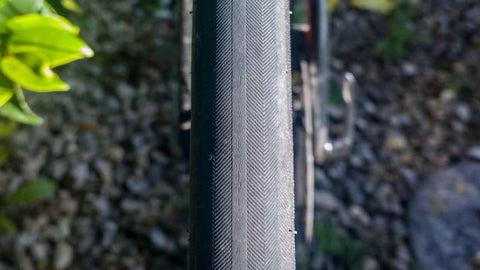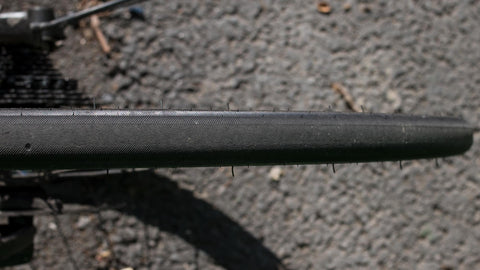Well not very quickly is the answer but there are a number of factors that affect tyre life span.
IRC Formula Pro tubeless tyres like the Formula Pro X guard and the Formula Pro RBCC tubeless tyres have a harder compound in the the centre section. The shoulders have a softer compound as this area suffers less wear. The shoulders use a file tread pattern to improve wet grip (I am not sure on the exact reasons why but IRC do insist that the thread pattern works).
The pictures of the front and rear Formula Pro RBCC are from a tyre after 1900km. The rider weighs 112kg and wrote the reviews.
Front tyre showing little wear.

The rear tyre showing more wear but the thread depth marker is still visible. This tyre is not worn yet.

Riders that ride in straight lines in the Fens get alot of miles out of most tyres.
Riders that put out alot of power tend to wear rear tyres fasters.
Heavy riders wear tyre more quickly,
Wider tyres tend to last a bit longer as the contact pattch is bigger.
Riders that climb alot tend to show faster rates of wear.
How the tyre wears is a good indicator of the suitability of the pressures used. The photograph of the rear tyre show a tyre wearing evenly. The pressure used is correct (this load dependent). If the pressure is too high if the centre wears only. If the pressure is too low you will see premature squaring off and wear in to far into the chevrons.
Tyres also get damaged by UV light and will crack. Natural rubber tends to crack more than artifical rubbers so don't store your bike in sunlight. Ozone also affects tyres and again they craze. So avoid Ozone exposure.
So how long to they last. Well for me quite a long time. On my commuter bike, a Genesis Equilibrium disc Ti with two rear Ortleb panniers (bikes weighs 15kg) and all 86 kg of me a IRC Formula Pro RBCC or X-Guard tyres on the rear wheel lasts 6000-7000km.
If you get less than me mileage wise then the above will explain why.







